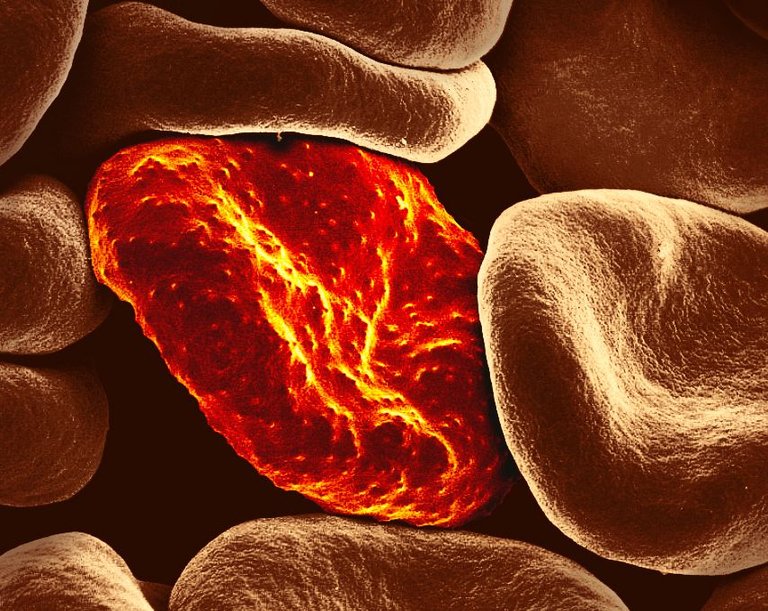Cell Injury and Adaptation

Our cells are unique when it comes to how they react to their internal environment. Helping us to maintain our internal system. Cells need to adjust in order to carry out its function effectively. And they can do this via many important processes which is known as cell adaptation. Cell adaptation is a process that allows our cells to adjust to different conditions in order to survive and function optimally. It occurs simply when the cell are under stress or being injured.
There are four main types of cell adaptation, each with their own distinct characteristics: I'll explain how the cells adapt to different conditions via: hypertrophy, hyperplasia, atrophy, and metaplasia. In this essay, we will be looking at each of these types of cell adaptation in more detail. Exploring their ways of manifestation and mechanisms.
HYPERTROPHY
The first on our list is Hypertrophy. But then, what's that? Hypertrophy is a cell adaptation that involves an increase in the size of individual cells. These cells are incapable of self replication, hence they increase in size and not in number. This can occur in response to increased demand or stress placed on the cells. For example, when our muscles are subjected to regular exercise, the muscle cells undergo hypertrophy in order to cope with the increased workload. This allows the muscles to become stronger and more efficient over time. Hypertrophy can also occur in other organs, such as the heart, in response to conditions like hypertension. This is known as pathologic hypertrophy. In this case, the heart muscle cells enlarge in an attempt to pump blood more effectively. Also, it causes cell injury if the stress can't be tolerated anymore. This leads to cell death.
HYPERPLASIA
Hyperplasia, on the other hand, involves an increase in the number of cells rather than the size of individual cells, unlike hypertrophy. This type of cell adaptation is often seen in tissues that have a high rate of turnover, such as the skin or the lining of the digestive tract. When these tissues are damaged or destroyed, the remaining cells undergo hyperplasia in order to replace the lost cells. This allows the tissue to heal and maintain its function. Hyperplasia can also occur in response to hormonal changes, such as during pregnancy when the uterus increases in size and as well the breast tissue undergoes hyperplasia in preparation for lactation or in puberty. Hyperplasia can be both physiologic where it is helpful in cell repair or pathologic where is it harmful.
ATROPHY
Atrophy is the opposite of hypertrophy. It involves a decrease or shrinkage in the size of cells. This happens in response to disuse or decreased demand placed on the cells. For example, when a limb is immobilized during cast, the muscles undergo atrophy due to lack of use. Similarly, when an organ is no longer needed, such as the thymus gland during adulthood, it undergoes atrophy as it is no longer required for immune function. Atrophy can also occur in response to aging, as cells become less efficient and start to shrink in size.
The mechanism of atrophy include decreased protein synthesis and increased protein degradation in cells. When more protein is destroyed, the cells tends to diminished.
METAPLASIA
The last but not the least is called Metaplasia. Now, Metaplasia is a type of cell adaptation where one type of cell is replaced by another type of cell. This can occur in response to chronic irritation or inflammation, where the normal cells are replaced by cells better suited to withstand the stress. An example of this is the development of Barrett's esophagus, where the normal squamous cells lining the esophagus are replaced by columnar cells due to chronic acid reflux. While metaplasia can help protect the tissue from further damage, it can also increase the risk of developing cancer in some cases.
In conclusion, cell adaptation is an important process in our lives because it allows our cells to adjust to different conditions and maintain their function. It can do this through hypertrophy, hyperplasia, atrophy, or metaplasia. cells have the ability to adapt and survive in the face of changing circumstances. If we know the knowledge of these different types of cell adaptation, we can gain insight into how our bodies respond to stress and how we can better support our cells in maintaining optimal health.
References
- https://www.amboss.com/us/knowledge/cellular-changes-and-adaptive-responses/
- https://accessmedicine.mhmedical.com/content.aspx?bookid=499§ionid=41568284
- https://www.ncbi.nlm.nih.gov/pmc/articles/PMC7171462/
- https://onlinelibrary.wiley.com/doi/10.1002/9781119432463.ch5#:~:text=When%20cells%20are%20injured%2C%20one,hypertrophy%2C%20hyperplasia%2C%20or%20metaplasia.

